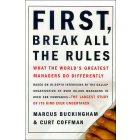 Physician engagement is a major healthcare industry buzz word these days – and a universal yearning for healthcare leaders
Physician engagement is a major healthcare industry buzz word these days – and a universal yearning for healthcare leaders
Now that organizations can get paid more for higher patient satisfaction scores, everyone is trying to solve the “mystery” of physician engagement among their providers.
Let me show you why physician engagement is not some mysterious black art and share some simple steps from a classic business book to create more physician engagement in any organization.
How are we doing so far?
The current state of physician engagement is generally poor throughout healthcare with only an occasional exception. How do we know this?
Repeated studies show symptomatic burnout averaging 1 in 3 physicians on any given office day and 60% of physicians reported they would retire today if they “had the means” in a 2012 survey. If you visit any of the physician-only websites, they are filled to the brim with exasperated comments about management incompetence and hostility. The general state of physician engagement is far from optimal. What we have instead is pervasive physician burnout
Get Your Corporate Physician Wellness Strategy
WellMDWorks 3-Step Process is at This Link
=============
Leadership capitulation is what's really disconcerting though …
CEO’s, Medical Directors and Chief Medical Officers often talk as if creating physician engagement — a happy, healthy group of provider — is either an unsolvable mystery or an unattainable goal. This is not rocket science. The steps to build physician engagement – just like the changes that prevent physician burnout – are often straightforward and can be implemented quickly. The biggest challenge is that many of them sit in our blind spots.
Let me give you a simple framework to measure for and create physician engagement in this post.
Once you understand that engagement and burnout are opposite ends of the same continuum you understand that engagement demands the Creative Destruction of Burnout. This also the key to hard wiring the Quadruple Aim into your organization.
The information I will tap comes from the robust research on employee engagement and the characteristics of a high performing team done over the last 25 years by the Gallup Organization and many others. With over 75% of physicians in employee positions for the first time in 2012, and the trend to employee status accelerating, this body of research holds many of the keys to physician engagement.
 This physician engagement framework comes from the classic business leadership book, “First Break All The Rules”.
This physician engagement framework comes from the classic business leadership book, “First Break All The Rules”.
This book was published in 1999 by the Gallup Organization (the polling people) and authored by Marcus Buckingham and Curt Coffman. The subtitle of the book is “What the world’s greatest managers do differently”.
Over the course of 25 years, the Gallup Organization surveyed and interviewed over 1 million employees and 80,000 managers in an effort to find the characteristics of a high performing work teams. They were searching for markers of employee engagement, exceptional team performance and quality leadership.
I believe their findings are a clue to the “special sauce” of physician engagement we are looking for. And what they discovered is so simple, so basic, so obvious (once you see their conclusions) I consider this one of the most important leadership books of all time.
Gallup is a polling company at heart. What they were looking for was a set of questions that would identify top teams and the most engaged workers. They asked about pay, benefits, bonus structures and hundreds of other questions and subjected their research to a massive meta-analysis and back checking.
Here’s what they found. If your team members can answer the following six questions with a strong “Yes” … you have identified a high performing team … that magic combination of a great manager and fully engaged employees. Before you read the list, take just a moment to imagine what the questions are … I think you will be surprised when you see them.
The 6 Questions
1) Do I know what is expected of me at work?
2) Do I have the materials and equipment I need to do my work right?
3) At work, do I have the opportunity to do what I do best every day?
4) In the last seven days, have I received recognition or praise for doing good work?
5) Does my supervisor, or someone at work, seem to care about me as a person?
6) Is there someone at work who encourages my development?
Gut Check Time
If your organization sent you this survey with a 5 point scale for each question – where “5″ is “strongly agree” … what would your answers be?
How about if we survey your team members … your nurse, MA, receptionist?
What scores would you expect from them?
Now ask yourself this question:
“What would it take to have your doctors and staff answer with a strong “Yes” to all 6 questions?”
Then get to it.
Simple … yes? We will both agree building a strong “Yes” to these questions is not easy; however, there is no rocket science involved. When you flip these questions on their head, the physician engagement formula becomes obvious.
[NOTE: The activities we are discussing here are Quadrant III and Quadrant IV initiatives in the Burnout Prevention Matrix system]
Here is 3 step physician engagement sequence to get you started
Step One
The first step is being willing to understand where physician engagement in your organization stands right now.
Ask your doctors and staff the six questions. You don’t need an expensive survey consulting firm and thousands of dollars to do this. This survey can be set up in free online survey software (such as surveymonkey.com) in a matter of just a couple of hours. Your doctors and staff can answer online and you can have results in hand within a week.
Get Your Corporate Physician Wellness Strategy
WellMDWorks 3-Step Process is at This Link
=============
Step Two
Give your people the raw data from the survey. Let everyone see the reality of your current situation. This sends several powerful messages that will kick you instantly into higher levels of physician engagement
- Your people know you heard them
- They can see what everyone else thinks in the organization
- You have proved your willingness to “look in the mirror” and take an honest look at how you are doing at this point
Step Three
a) Bring your people into the loop
Create forums where you ask questions like, “What can we do to make sure you have everything you need to do your job right?” Brainstorm and select improvement projects based on their feedback. Engage them in creating a constantly improving workplace environment.
b) Start to visibly care about and take an interest in your people
Create a “culture of caring” at all levels of the organization. Look at questions 4, 5 and 6 above to see how important this is. Fully 50% of the questions that define a high performing team are about how much you care about your physicians and staff. When your people know you care – that someone at work “has my back” – staff and physician engagement soars.
Certainly healthcare has its own unique challenges that transcend the simplicity of these questions and oversimplification has its pitfalls. However, take a moment to imagine the engagement, resilience and adaptability of your organization when physicians and staff give you a “strongly agree” for all of the questions above.
That is staff and physician engagement. As you can see, this is not a mystery or a black art.
Physician engagement is the result of
1) Understanding and agreement on what is expected
2) Providing the tools and support to allow everyone to do what they do best
3) Caring about your people – visibly, openly and regularly
============
PLEASE LEAVE A COMMENT
How would your organization do on the 6 questions and what is the first thing you would want to change for more physician engagement?



